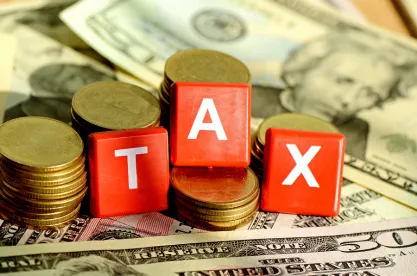This is the second in a series of posts about neutral principles that make for “good” tax-advantaged bond legislation.
We pick up our series as the Senate prepares for a final vote on a bipartisan infrastructure bill in the coming days. In the last post, we stated the general rule that a good piece of tax-advantaged bond legislation tells issuers how and when they can refund bonds issued under any new bond program. Here’s an example in current law to illustrate the point.
In 2005, Congress created a new category of tax-exempt “exempt facility” private activity bonds for highway facilities and surface freight transfer facilities.[1] These bonds are exempt from the typical private activity bond volume cap[2] but are subject to a special volume cap administered by USDOT. Unlike the typical PAB volume cap (which is apportioned among the states annually based on population), the special volume cap for these bonds is a national $15 billion cap that is available indefinitely, although all of it has now been spoken for.[3]
Exempt facility bonds can be currently refunded[4] with tax-exempt bonds.[5] Where the exempt facility bonds are subject to volume cap, there are rules that determine whether the refunding bonds need additional volume cap.[6] Recognizing that highway and surface freight transfer exempt facility bonds are subject to their own special volume cap provisions, Congress wisely[7] addressed in the statute whether and when bonds issued to refund these bonds would need additional volume cap under these special provisions in the same way that the typical PAB volume cap statute addresses the question of refundings. If the refunding bonds fail to meet the requirements for avoiding new volume cap, it’s likely they can’t be issued on a tax-exempt basis, because, although there is no rule that says this, the USDOT likely will not allocate precious volume cap to a refunding for an existing borrower (as opposed to a new money project for a new borrower), which would give the existing borrower a second bite at the apple.
How can the current refunding bonds[8] avoid the need for more highway and surface freight transfer bond volume cap? The statute provides that the volume cap requirement does not apply to “any bond (or series of bonds)” issued to current refund a bond that met the applicable transportation bond requirements under Code Section 142(m) if the current refunding bonds meet both of the following requirements:
-
The average maturity date of the issue of which the refunding bond is a part is not later than the average maturity date of the bonds to be refunded by such issue.[9]
-
The “amount” of the refunding bonds doesn’t exceed the “outstanding amount” of the refunded bonds.
So, Congress took our sage advice[10] and dealt with the circumstances under which bonds issued under a new program could be refunded. How’d they do? What are the strengths and weaknesses of the language? As we have said, when we answer this question, we will set aside matters of political goals (“Highways are good! Hooray for highways!”) and focus on neutral principles for efficiently accomplishing those goals.
Strengths:
-
The provision takes up the question of refundings and does not leave it to the IRS or USDOT to fill in that gap. This alone should not be overlooked and is worthy of praise.
-
The language, which refers to a “series of bonds,” addresses the fact that tax-exempt bonds are often refunded more than once. The correct reading of the language appears to be that a current refunding won’t need more volume cap if either the refunded bonds got volume cap or didn’t need it because the refunded bonds met the refunding exception.
-
The refunding exception uses the neutral terms “bonds” and “issue,” meaning that a taxable refunding issue could be used as part of the chain of refundings without “breaking the chain” of tax-exempt eligibility. Although the importance and desirability of taxable structures waxes and wanes over time, given the long life cycle of a typical tax-exempt bond issue (particularly these bonds, which are often issued to finance major construction projects with a long useful life), this is a helpful feature of the language.
Weaknesses:
-
The phrase “series of bonds,” which seems to allow multiple generations of refundings, is somewhat unclear. A clearer way to express this concept might have been to say that the exception applies to a bond issued to currently refund any bond “directly or in a series of refundings” or to refund a bond that received a volume cap allocation or that was exempt from the allocation requirement.
-
By focusing on current refundings, the language eliminates the possibility of an interim taxable advance refunding. Such an issue seems to “break the chain.” Should it? A later current refunding of in interim taxable advance refunding likely would have a lower interest rate (thus reducing the burden on the federal treasury) than the original new money bonds.[11]
-
The use of the phrase “amount” is somewhat unclear. Because it isn’t defined, bond counsel will likely be forced to take the conservative view that the “amount” of the refunding bonds is the greater of the par amount or the sale proceeds of the refunding bonds and that the “amount” of the refunded bonds is the outstanding principal amount. This means that the issuer/borrower must pay any accrued interest on the refunded bonds or issuance costs of the refunding bonds out of its own pocket. While exempt facility bond tax lawyers are very used to this scenario, because “amount to amount” tests such as this one are quite common in the area, is it really necessary? Is it really abusive to allow an issuer/borrower to finance typical costs of a refunding issue,[12] particularly if the refunding is being done for debt service savings?
-
Do we really need a “no extension of maturity” requirement? Both the new money bonds and any bonds issued to refund them will be subject to the requirement in Code Section 147(b) that the weighted average maturity of the issue cannot exceed 120% of the weighted average useful life of the bond-financed assets. Isn’t that enough of a limitation on the potential duration of the chain of refundings? Compare this rule to the refunding exception for the typical volume cap requirement in Code Section 146(i) and to the general refunding exception for targeted bond programs in IRS Notice 2019-39, neither of which contains such a requirement.
As we noted at the outset, these highway and surface freight transfer bonds are exempt facility bonds, which can be refunded with tax-exempt bonds. The special volume cap requirement, however, requires special rules for refundings. But this is the only reason that this new bond program required a special set of rules for refundings. Had Congress enacted the program as an extension of exempt facility bonds and subjected them (or not!) to the general volume cap provisions, then even these (admirably executed) refunding exception rules would not have been necessary.
This highlights an important insight, which will be the subject of the next post. To the extent possible, new bond programs should be created as extensions of existing bond programs, rather than being created out of whole cloth. More on that in the next installment.
[1] Code Sections 142(a)(15) and 142(m). Code Section 142(a)(15) provides that the term “exempt facility bond” means any bond issued as part of an issue 95 percent or more of the net proceeds of which are to be used to provide “qualified highway or surface freight transfer facilities,” and section 142(m) imposes specific requirements that tell us what it means for a bond to be used to provide “qualified highway or surface freight transfer facilities.”
[2] Code Section 146.
[3] The USDOT website lists the following projects; our understanding from discussions on behalf of our clients is that the remaining volume cap is either spoken for or there are at least applications in the hopper in an amount that would exceed the remaining authority. The list is here: https://www.transportation.gov/buildamerica/financing/private-activity-bonds. A provision in the Senate version of the infrastructure bill would increase the limit from $15 billion to $30 billion (this is a bit confusing; what it seems to mean is that an additional $15 billion ($30 billion minus $15 billion –even a Florida State grad can do that math), not $30 billion, would be available for additional projects).
[4] But not advance refunded, even under pre-TCJA law.
[5] Reg. 1.103-7.
[6] Code Section 146(i).
[7] Surprisingly, the blog platform did not crash when I typed this.
[8] The statute states the requirement that the refunding bonds must be current refunding bonds as a separate, third requirement (Code Section 142(m)(4)(C).) Arguably, this is redundant because under pre-TCJA law private activity bonds could not be advance refunded. It’s possible, however, that Congress could restore tax-exempt advance refunding bonds and – now here’s a hopeful thought – Congress could break from the approach of prior law and allow an issuer to advance refund PABs. In that case, this provision would become relevant. Here we insert our usual reminder that there’s no theoretical reason, other than distaste for PABs, why advance refundings shouldn’t be just as available for these bonds as they are for governmental bonds and qualified 501(c)(3) bonds. Advance refundings for PABs do not present the (overstated) “dangers” of advance refundings any more than advance refundings of governmental or 501(c)(3) bonds.
[9] For this purpose, average maturity is determined the same way that it is determined for purposes of the “120% useful life test” in Code Section 147(b), by weighting the principal amounts by their respective issue prices.
[10] 16 years before we provided it – enormous foresight.
[11] Contrast this with the refunding exception for the traditional volume cap in Code Section 146(i), which could be read to permit an interim taxable advance refunding and a later tax-exempt current refunding of that advance refunding without requiring additional volume cap.
[12] Perhaps any costs within the definition of a “refunding issue” as defined in Reg. 1.150-1(d).




 />i
/>i
